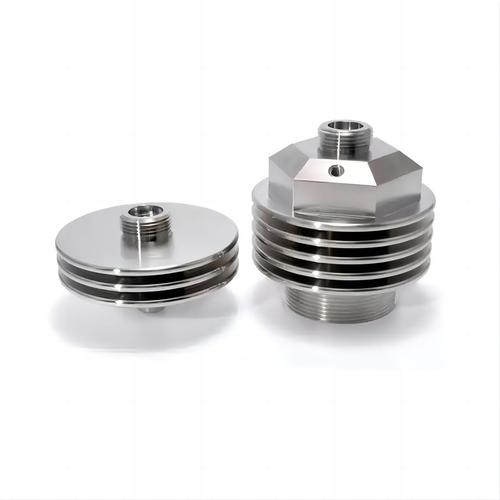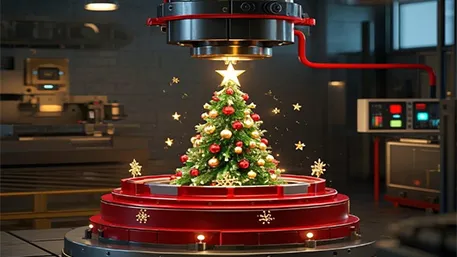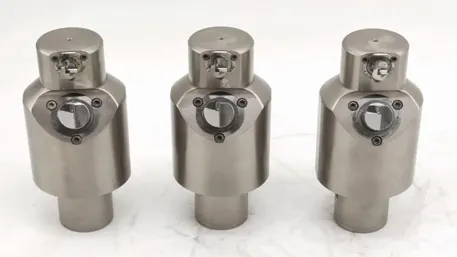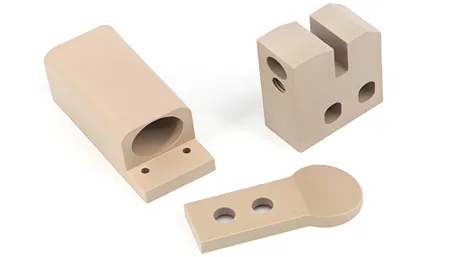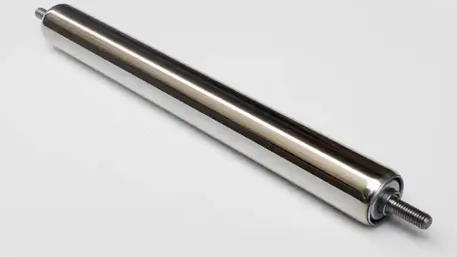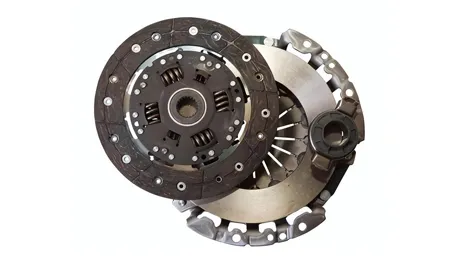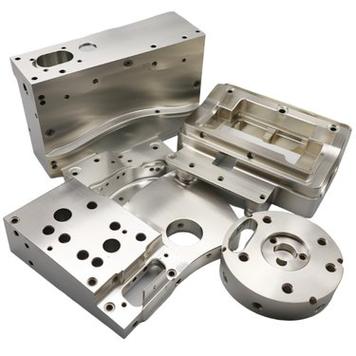1. Core Challenges in Precision Machining: Invisible “Precision Killers”
When producing high-precision parts, the machining system consisting of the machine tool, tool, and workpiece acts like a set of precision gears—even a 0.001mm error can render a part unqualified. Our measurements show:
- During high-speed spindle rotation, vibration frequencies at 217Hz, 589Hz, and 842Hz most easily cause tool chatter, resulting in surface lines over 0.002mm deep.
- After 2 hours of continuous machining, spindle thermal expansion due to friction reaches 0.003mm—1/30th the diameter of a human hair—enough to exceed tolerance for bearing holes.
FAQ Q1: How much does vibration affect machining accuracy?
Example: When machining titanium alloy without vibration control, surface roughness can reach 0.4μm (1/200th the diameter of a hair), while the qualified standard usually requires below 0.25μm. It’s like writing with a trembling hand—lines become blurred; similarly, vibration makes part surfaces “rough.”
FAQ Q2: How to optimize cutting force?
Based on 8,000+ titanium alloy machining tests:
- Tool rake angle maintained at 12°–15° (blade tilt angle)
- Feed rate controlled at 0.05–0.1mm/rev (distance tool advances per spindle rotation)This stabilizes cutting force, extending tool life by 30%—equivalent to machining 200 more parts per tool.
2. Three Key Error Sources Affecting Precision
1. CNC System “Response Delay”
The CNC system acts as the machine’s brain, with signal transmission delays amplifying 3–5 times during high-speed machining. For example, when machining complex automotive engine surfaces, this delay can shift the actual trajectory by 0.005mm—similar to a hair’s diameter—causing assembly issues.
2. Gradual Damage from Thermal Deformation
We recorded a machine tool’s temperature changes: after 4 hours of continuous machining, spindle bearing temperature rose from 25°C to 55°C, causing 0.008mm radial expansion. This matters: when machining aerospace fuel nozzles requiring 0.002mm wall thickness uniformity, thermal deformation led to 30% scrap rate.
3. Vibration Trap in High-Speed Cutting
When cutting speed exceeds 120m/min (similar to highway driving speed), tool vibration accounts for over 60% of surface quality issues. Test data shows: high-speed machining produces over 50 invisible pits per mm², vs. <20 at low speeds.
FAQ Q3: Why is thermal deformation so harmful in precision machining?
Precision is measured in microns (0.001mm). A 0.003mm thermal expansion—1/27th of a hair’s diameter (0.08mm)—reduces fit precision by 40% when machining a 10mm-diameter bearing hole.
3. Intelligent Technologies for Self-Adjusting Machines
1. Real-Time Vibration Monitoring: Equipping Machines with “Stethoscopes”
16 vibration sensors detect high-frequency vibrations (300–500Hz, most prone to chatter). When vibration energy exceeds 40%:
- Spindle speed decreases by 20% (e.g., from 5,000rpm to 4,000rpm)
- Feed rate increases by 15% (from 0.1mm/rev to 0.115mm/rev)This reduces surface roughness by 42%, transforming “frosted glass” surfaces into “mirror finishes.”
2. Thermal Deformation Prediction: Installing a “Thermometer Network”
12 temperature sensors on key components (spindle, bearings, leadscrews) collect data every 2 seconds. An intelligent model predicts thermal deformation trends 1 minute in advance with ±0.0005mm accuracy (200x finer than a hair), adjusting tool position in real time. A medical device manufacturer saw roundness error drop from 0.0025mm to 0.0012mm, with yield increasing from 75% to 98%.
FAQ Q4: Are these intelligent technologies expensive?
For a factory producing 100,000 precision parts annually, a
70,000initialinvestmentreducestoolwearby35
28,000 annual savings) and scrap rate from 8% to 2% ($42,000 annual savings), paying back in 10 months.
4. Real-World Cases: Data Speaks Louder
Case 1: EV Motor Shaft Machining
A car manufacturer previously had:
- Surface roughness (Ra): 0.4μm
- Roundness error: 0.0025mm
- Daily scrap rate: 5% (100 parts)
After intelligent control:
- Ra reduced to 0.25μm (mirror-like finish)
- Roundness error shrank to 0.0012mm (48% of original)
- Scrap rate dropped to 0.8% (84 fewer wasted parts daily)Efficiency also increased by 18%—220 more qualified parts produced daily.
Case 2: Aeroengine Blade Tenon Machining
Traditional methods for superalloy machining had:
- Critical dimension deviation: 28%
With thermal compensation:
- First-pass yield soared to 96% (24 fewer scrap parts per 100)
- CPK (stability index) increased from 1.33 to 1.85 (exceeding aerospace standard of 1.67)
- Machining time per part reduced by 22% (from 45min to 35min), saving 3,000 hours annually
FAQ Q5: Can small factories use these technologies?
Major CNC systems (FANUC, Siemens) offer basic vibration monitoring and thermal compensation for
21,000—suitable for factories producing 5,000+ parts/month. Even basic systems improve precision by 30%.
5. Key Takeaways: Three Core Principles
- Vibration Control: Avoid critical frequencies (217Hz, etc.), adjust speed/feed in real time
- Thermal Management: Use sensor networks to predict deformation within ±0.0005mm
- Data-Driven: Rely on an 8,000+ parameter database—more accurate than master craftsman experience
Whether machining automotive parts or aerospace components, the goal is watch-like precision: size errors <1/50th of a hair, surfaces smooth enough to reflect light. This isn’t science fiction—it’s achievable today.
For high-precision machining, remember these three numbers:
- Adjust when vibration energy >40%
- Thermal compensation accuracy: ±0.0005mm
- Qualified surface roughness: <0.25μmChoosing a manufacturer meeting these standards minimizes risks.
